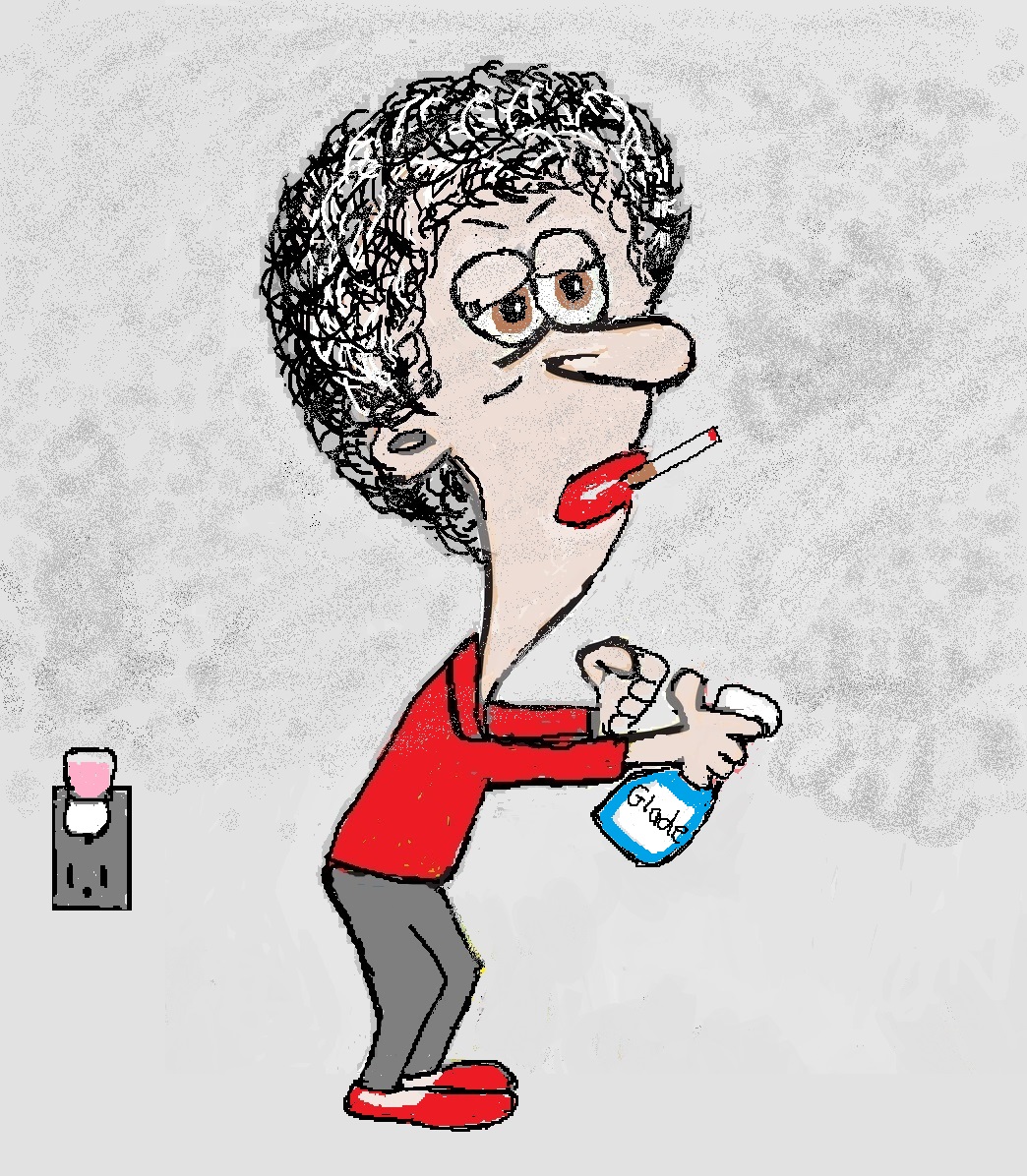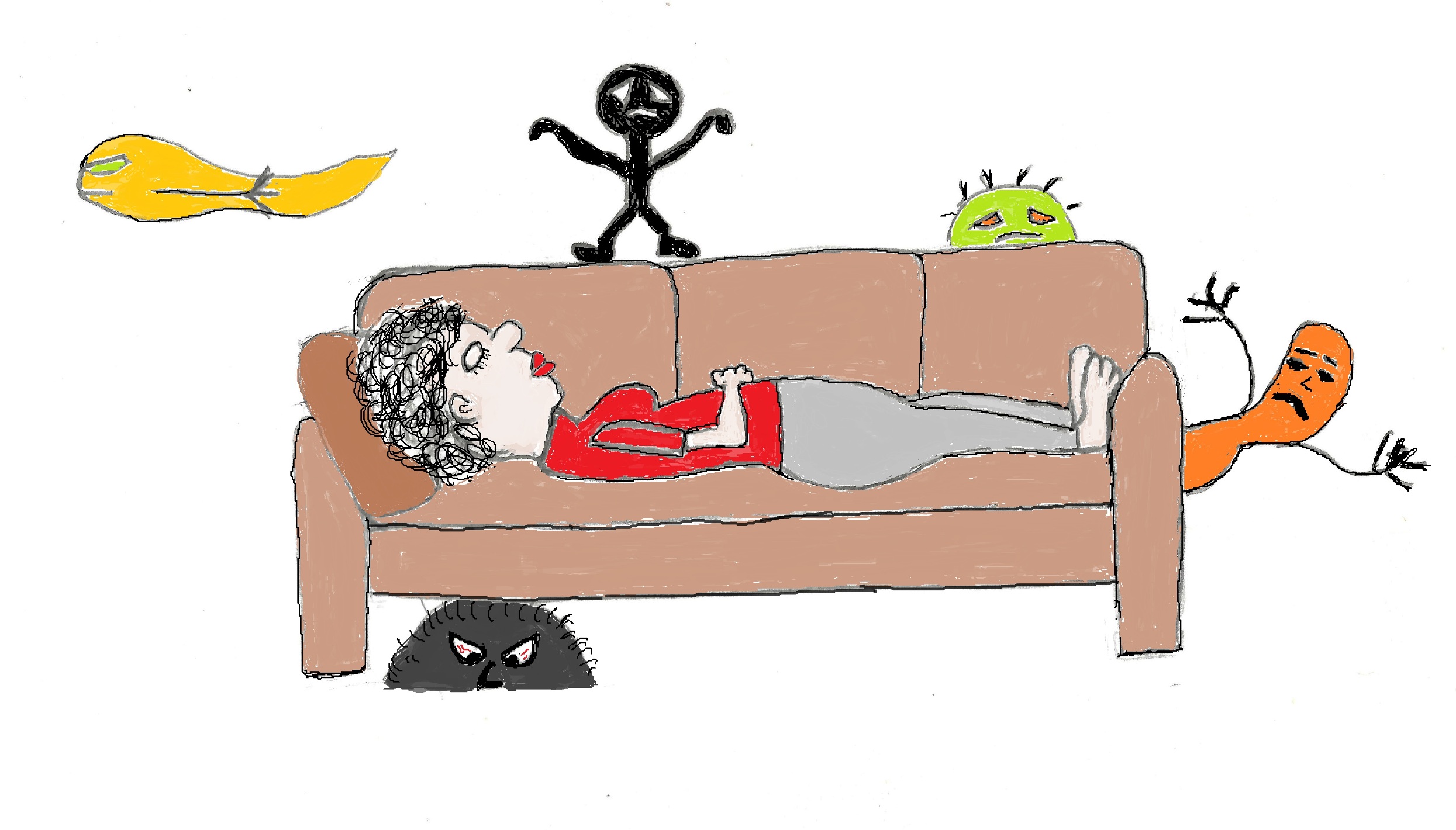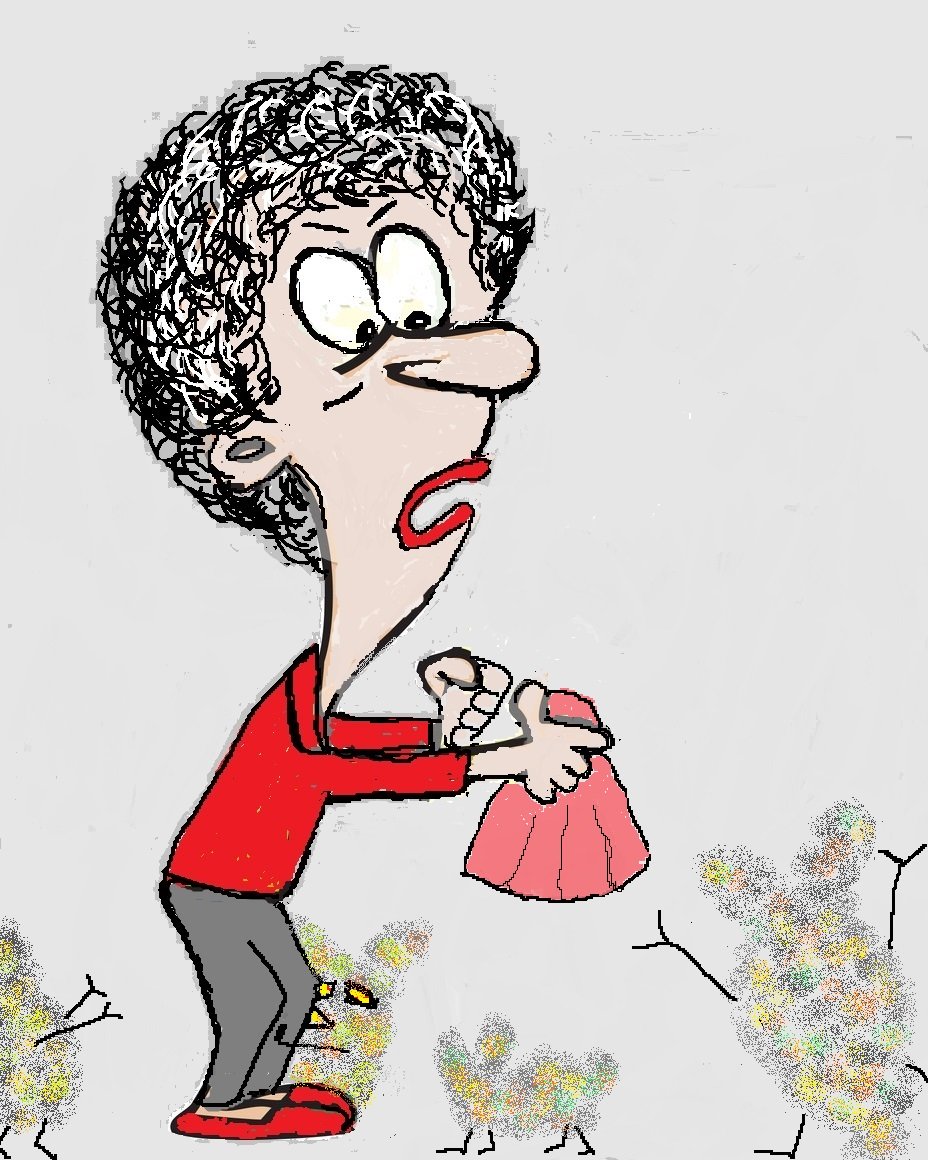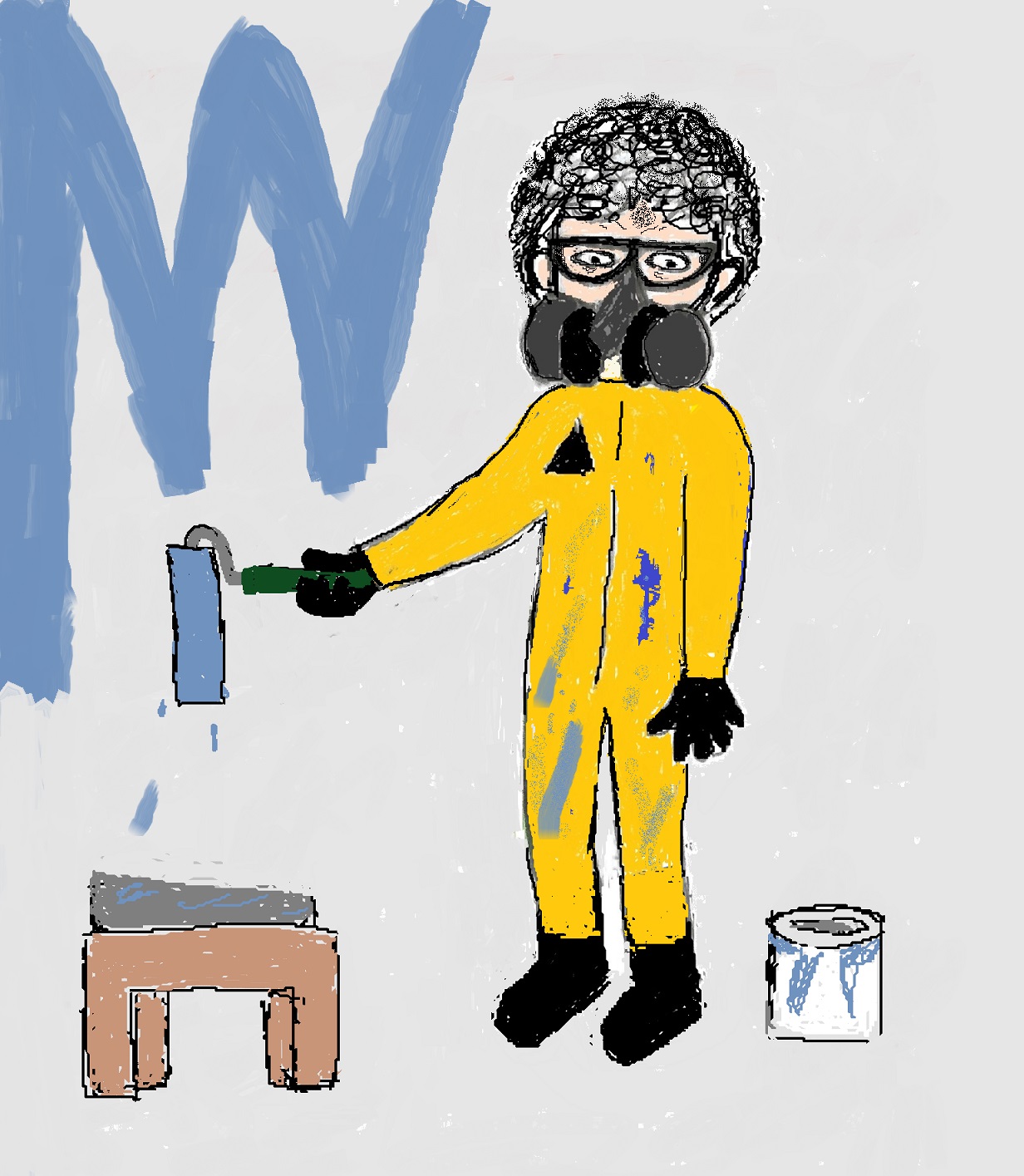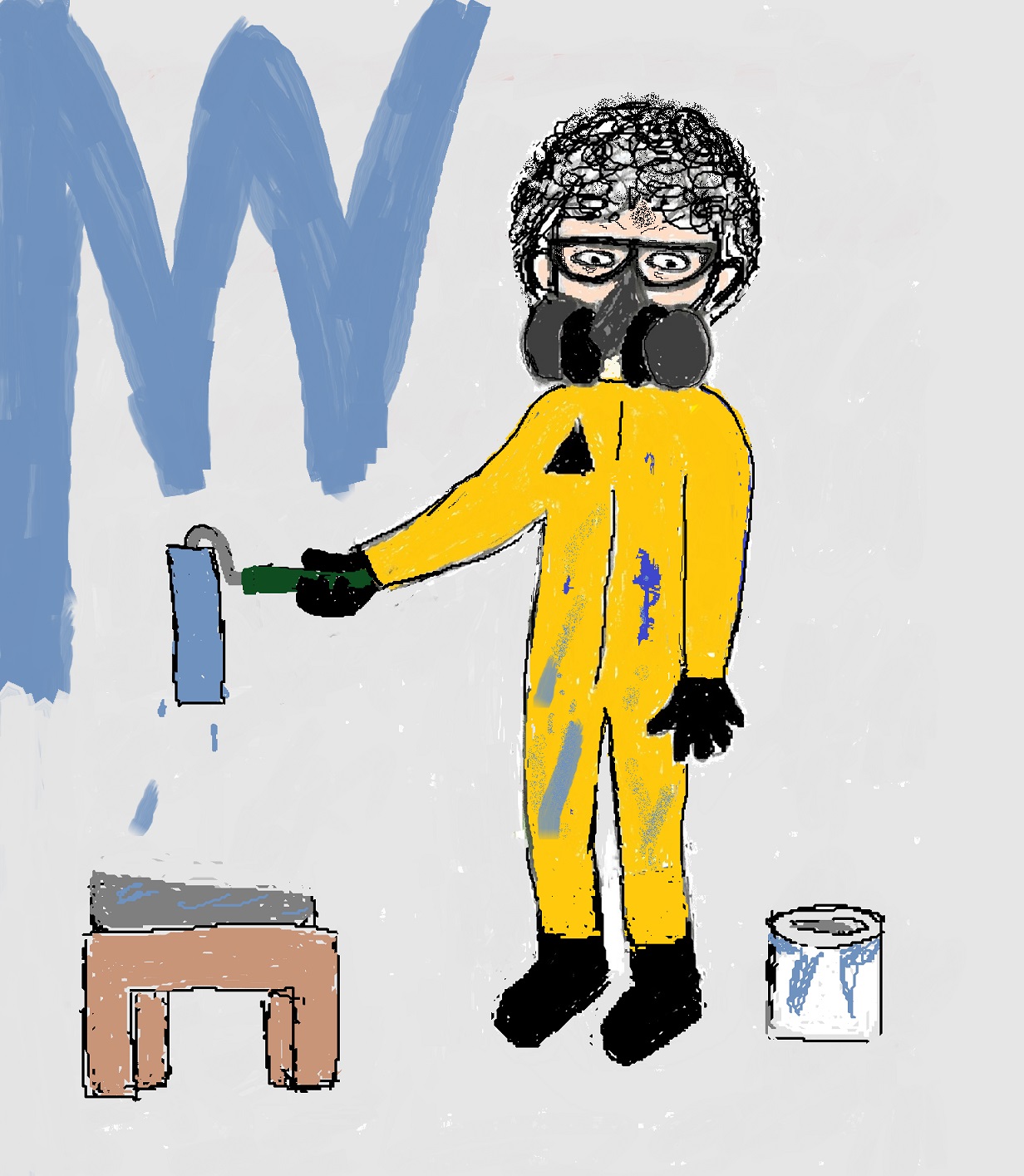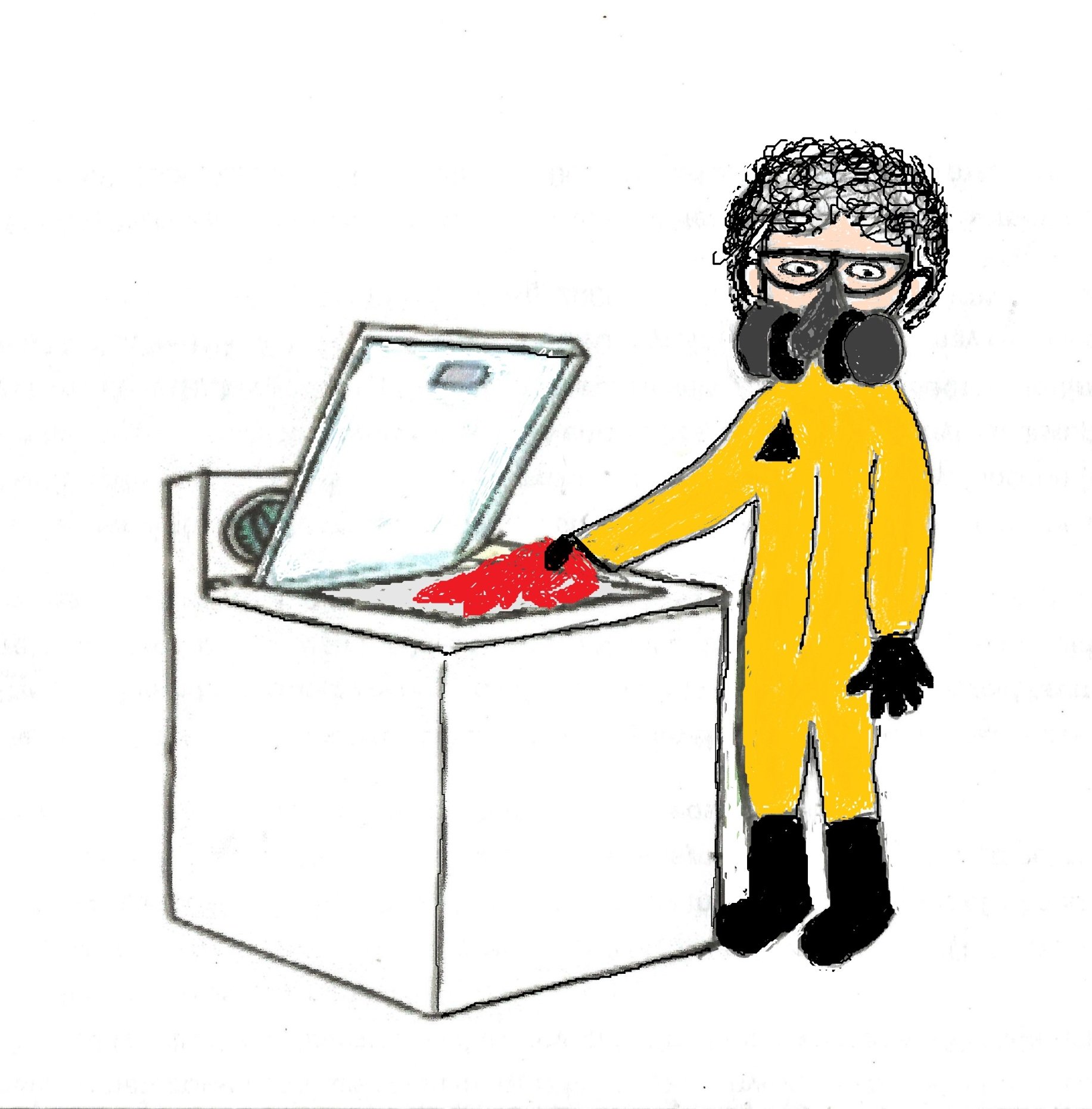- Home
- Toxic Chemicals in Household Products
- Air Fresheners Are Toxic
You Might As Well Smoke
Air Fresheners are toxic. So, if your home smells like an apple cinnamon medley – well- you might as well smoke. Yeah, you read that right.
And no, I didn’t book a stay at the Crazy Town Hotel. I’m also not really suggesting that you take up smoking or spend time with smokers so you can suck up their secondhand smoke.
Because everybody, even smokers, know that smoking cigarettes and exposure to second-hand smoke is dangerous to your health. There are a huge amount of studies that support this.
But, except for scientists who study toxic chemicals, very few people realize there are a huge amount of studies that show using air fresheners and other products with fragrance is also dangerous to your health.
Air Fresheners Are Toxic
So, if air fresheners are dangerous to your health why do 75% of US households use them? Well, it’s all about perception.
In 1948 the modern air freshener was born and since then advertisers have done a great job convincing you that your life will only be complete if your home smells like lavender. And of course your house isn’t really clean unless it smells like an ocean breeze.
Remember forty years ago, advertisers had you believing it was very cool and safe to smoke. Now we know they were lying.
But here’s the cold, hard truth about the benefits of using air fresheners – advertisers are lying. Clean has no smell. Nothing. Zip, zilch, nada.
And here’s a big dose of reality. Air fresheners don’t clean your air. They don’t remove odors. What they do, just like smoking, is expose you to lots of toxic chemicals.
But thanks to effective advertising, the perceived benefits of using air fresheners have dwarfed the risks to your health. And there are plenty of risks.
Just like with smoking. In fact, using air fresheners and smoking cigarettes are similar in a lot of ways.
Both Are Made With Secret Ingredients
There are a possible 600 ingredients that are used to make cigarettes. And tobacco companies don’t disclose the ingredients that are used in their products.
There are a possible 3,000 chemicals used to make air fresheners. Each “fragrance” used in them is usually a mixture of several dozen to several hundred chemicals. And less than 10% of the ingredients in air fresheners are disclosed on the labels.
And for both cigarettes and air fresheners what you don’t know CAN hurt you.
They Have 11 Dangerous Chemicals in Common
Smoking and air fresheners both emit lots of dangerous chemicals. They even emit some of the same chemicals.
While researching this article I compiled a list of the 45 most common chemicals emitted from air fresheners and cigarettes. I came up with 11 that they have in common.
Seven of these chemicals cause cancer, 6 are toxic to your respiratory system, 2 are toxic to your reproductive system and 2 are toxic to your cardiovascular system. In other words, air fresheners emit 11 of the same chemicals that make smoking and second hand smoke so dangerous.
Acetaldehyde is a good example. It is classified as a carcinogenic hazardous air pollutant and is toxic to your respiratory system. (Acetaldehyde is also created by the interaction of air freshener chemicals with indoor air pollutants.)
The list of chemicals in common includes
|
Acetone |
Acetaldehyde |
Acrolein |
Benzene |
Coumarin |
Ethyl Acetate |
|
Ethylbenzene |
Formaldehyde |
Styrene |
Toluene |
Methyl ethyl ketone |
They Both Pollute Your Indoor Air
The impact of smoking on your indoor air quality is infamous. The impact of air fresheners on your indoor air quality is unrecognized by most people.
But scientists that study air pollution know that smoking and using air fresheners are two of the top five ways that you pollute your indoor air. And they both made it to the top spots for the same reasons.
They Both Emit Toxic VOCs
Volatile organic compounds (VOCs) are carbon based compounds that evaporate at room temperature. They move through your home as a gas. Smoking and air fresheners are both major sources of VOCs in your home.
Cigarette smoke for example, is mainly made of about 400-500 gases that include VOCs, carbon monoxide and carbon dioxide. In 2012 the FDA identified 93 (about 23%) of them as potentially harmful or harmful chemicals.
Air fresheners emit over 150 different VOCs (averaging 19 different VOCs per product) and 25% of them are known to be toxic. In US studies, all the air fresheners tested emitted at least 1 or more toxic chemicals.
But it’s not just the variety and toxicity of the VOCs that are similar. The most common VOCs found in smoke are also emitted from air fresheners in the highest concentrations.
Both smoking and using air fresheners are strongly associated with high indoor levels of acrolein, acetaldehyde, benzene, ethyl acetate, ethyl benzene, formaldehyde and toluene.
They Both Create Secondary Pollutants
Some of the VOCs emitted in cigarette smoke and air fresheners react with your homes air to create even more pollutants, called secondary pollutants.
For example, tobacco smoke can combine with gases in the air to form cancer-causing compounds like nitrosamines and PAHs (polycyclic aromatic hydrocarbons). These carcinogens have been found in dust samples taken from the homes of smokers.
Numerous studies have revealed that the highest concentrations of chemicals emitted from air fresheners are limonene (from citrus rinds) and linalool (from flowers and spices). These fragrance chemicals are allergens. But they also react with ozone and other indoor oxidants to create carcinogens like formaldehyde and acetaldehyde.
Think about this. Formaldehyde levels in cigarette smoke ranges between 2-50 ug/m3 (micrograms per cubic meter) per cigarette. A large European study of plug-in air fresheners found they created up to 40 ug/m3 of formaldehyde in your home per half hour of use.
They Both Release Particles Into Your Air
Smoking and using air fresheners also emit particles into your home’s air. Smaller particles (PM2.5) are more dangerous to your health than large particles (PM10). PM2.5 are fine inhalable particles, with diameters that are generally 2.5 micrometers and smaller. A strand of your hair is 50-70 micrometers in diameter.
Burning tobacco is the primary source of particles in smoke. Smoking increases small and large particle levels in homes by 100’s of micrograms per cubic meter. It’s been reported to add 133.6 ug/m3 (micrograms per cubic meter) of PM2.5 to indoor air and 149 ug/m3 of PM10.
Air fresheners create particles when some of the chemicals in them react with ozone in your home’s air. These reactions create more small particles than large. And fragrance chemicals like limonene and linalool play an important role in forming indoor PM2.5.
A recent study found that within minutes of using liquid air fresheners small particles increased by 203 ug/m3. Solid air fresheners increased particles by 110 ug/m3.
Research on the dangers of exposure to particles, especially small (PM2.5) particles, continues to grow. PM2.5 exposure is among the top ten global risks leading to lower life expectancy and/or lives with disease. Yet both smoking and air fresheners exceed the EPA guidelines of 35 ug/m3 for PM2.5 exposure.
Your Exposure To Both Is The Same
Smoking and air fresheners release and create a lot of toxic chemicals. And you are exposed to these chemicals in the very same way.
You Inhale The Toxins
Both smoking and air fresheners release toxic chemicals that enter your body when you breath. The chemicals you inhale can cause inflammation and oxidative stress in your lungs or move with other inhaled toxins into blood that circulates through your body.
And when you inhale fine and especially ultrafine particles, they are quickly absorbed and also may pass directly into your blood stream.
This route bypasses your liver, your body’s detox organ and main protection from toxic substances. That means the toxic chemicals you inhale from air fresheners and cigarette smoke move through your body unchanged.
This results in a direct insult to your cardiovascular system and other organs distant from the lungs. Because of this the toxins you inhale can be more of a threat to your health than the toxins you ingest from food and water.
You’re Voluntarily And Involuntarily Exposed
You can choose to smoke or choose not to smoke. But you are often involuntarily exposed to secondhand smoke.
Fortunately, the number of people smoking has declined in recent years. In the US only 15% of the population still smoked in 2015.
Because of this decrease, the percentage of people involuntarily exposed to cigarette smoke has also declined. While 52% of you were exposed in 2000, by 2012 it was down to 25%.
You also choose to use air fresheners or choose not to use them. In the US 75% of households use air fresheners and 98% use products with fragrance, like fabric softener.
Even if you don’t use air fresheners 60% of you are involuntarily exposed from use by other people. And 92% of you are involuntarily exposed to all types of fragrances in scented products.
According to Dr Steinemann, a well-known fragrance researcher, “secondhand scents,” or indirect exposure to air fresheners, raises concerns parallel to secondhand tobacco smoke.”
Your Home Absorbs Them
If you’ve ever spent time in the home of a smoker you already know that the toxic chemicals emitted from cigarettes are absorbed into walls, furniture, curtains and many other surfaces.
Research shows that particles from secondhand tobacco smoke can settle in dust and on surfaces and remain there long after the smoke is gone. Some studies suggest the particles can last for months.
Your home also absorbs the chemicals emitted from air fresheners. In multiple studies fragrance chemicals and phthalates are consistently found in 90% or more of dust sampled. These chemicals are also absorbed into walls, furniture, curtains and many other surfaces.
Once they are absorbed they can be rereleased into your homes air increasing the amount of time you're exposed to the toxic chemicals in cigarette smoke and air fresheners.
They Share The Same Health Effects
Just like the evidence on smoking, there is plenty of evidence that using air fresheners can damage your health. And in similar ways.
Short term exposure to cigarette smoke can cause migraine headaches, asthma attacks, breathing difficulties, respiratory difficulties, burning eyes, nose and throat, ear infections in children and neurological problems.
Short term air freshener exposures, even at low levels, can cause migraine headaches, asthma attacks, breathing difficulties, respiratory difficulties, mucosal symptoms, dermatitis, infant diarrhea and earache, neurological problems, and ventricular fibrillation.
Long term exposure to cigarette smoke is linked to lung, bladder, and throat cancer, leukemia, lymphoma, heart disease, and respiratory problems like COPD and bronchitis. It may also harm your neurological, reproductive, immune, and endocrine systems.
The long term health effects of using air fresheners has not been studied. But the specific air freshener chemicals (for example- formaldehyde, acetaldehyde, benzene, toluene, phthalates) and small particles emitted from their use have.
Long term exposure to these chemicals is linked to lung cancer leukemia and lymphoma. These chemicals are also toxic to the neurological, cardiovascular, respiratory, reproductive, immune and endocrine systems.
Just Quit
Medical professionals warn smokers that to protect their health they need to quit. Environmental health researchers also warn people who use air fresheners to quit.
Because when it comes to protecting your health from the toxic emissions in air fresheners the solution is simple – Get all air fresheners and scented products out of your home.
And reduce involuntary exposure by convincing your friends and family to do the same. Speak to your employers about initiating a “No Fragrance Policy” like The Centers For Disease Control did.
The CDC’s Indoor Environmental Policy States that - “Scented or fragranced products are prohibited at all times in all interior space owned, rented, or leased by CDC.”
There are some simple less toxic options you can use to freshen your home’s air.
- Put vodka in a spray bottle and spray around your home to get rid of musty odors. You can add 20 drops of essential oil for scent. Choose essential oils with low (< 15%) levels of limonene, linalool, and α-pinene like peppermint, tea tree, cinnamon bark, lemongrass, cedar and eucalyptus oils.
- Simmer herbs and spices in a small simmering pot.
- Set bowls of baking soda around your home to absorb odors. I hide mine in pottery.
- Try bamboo charcoal bags to absorb odors.
- Grow a cutting garden in the summer and fill your home with the scent of fresh flowers.
